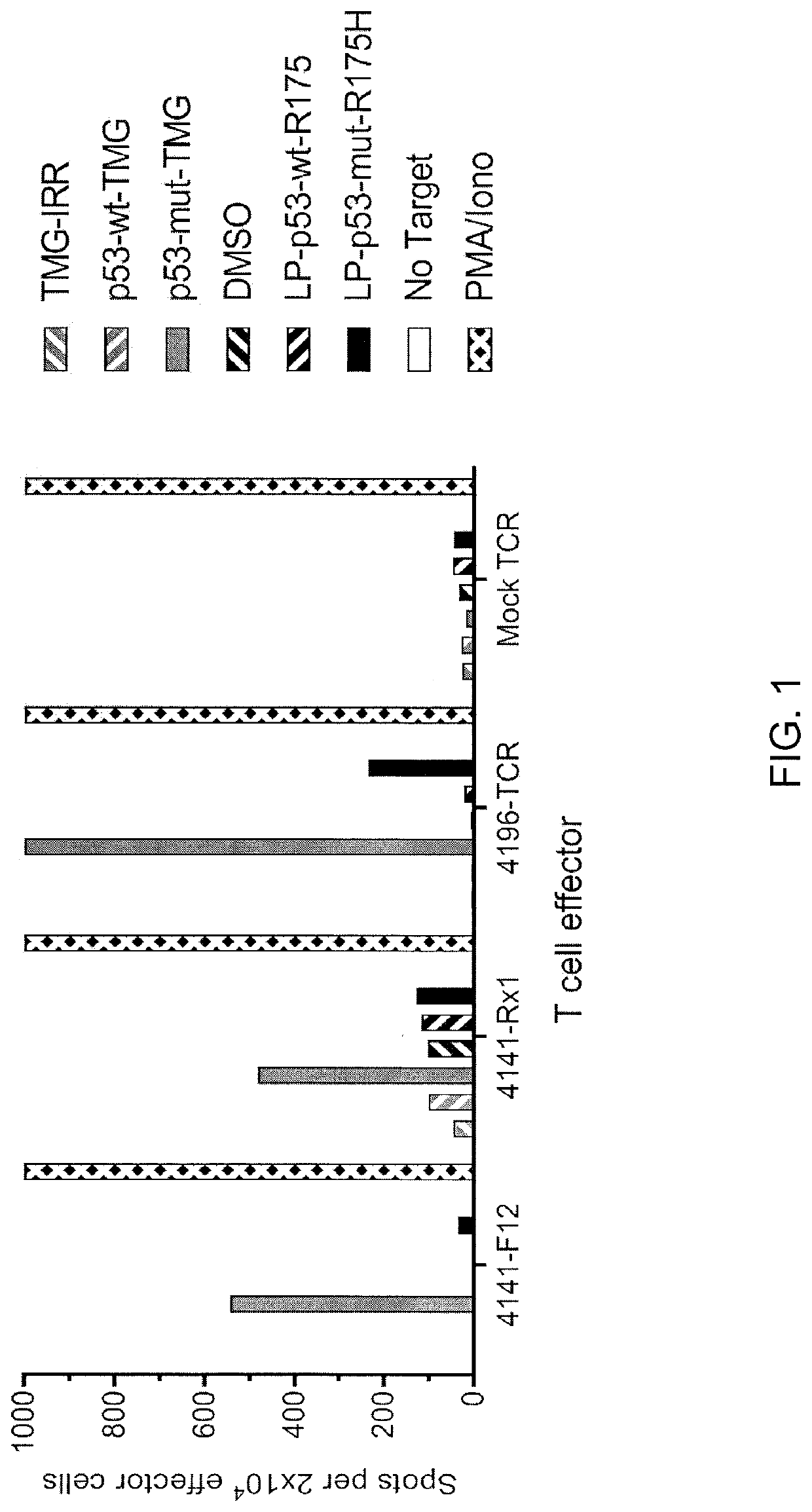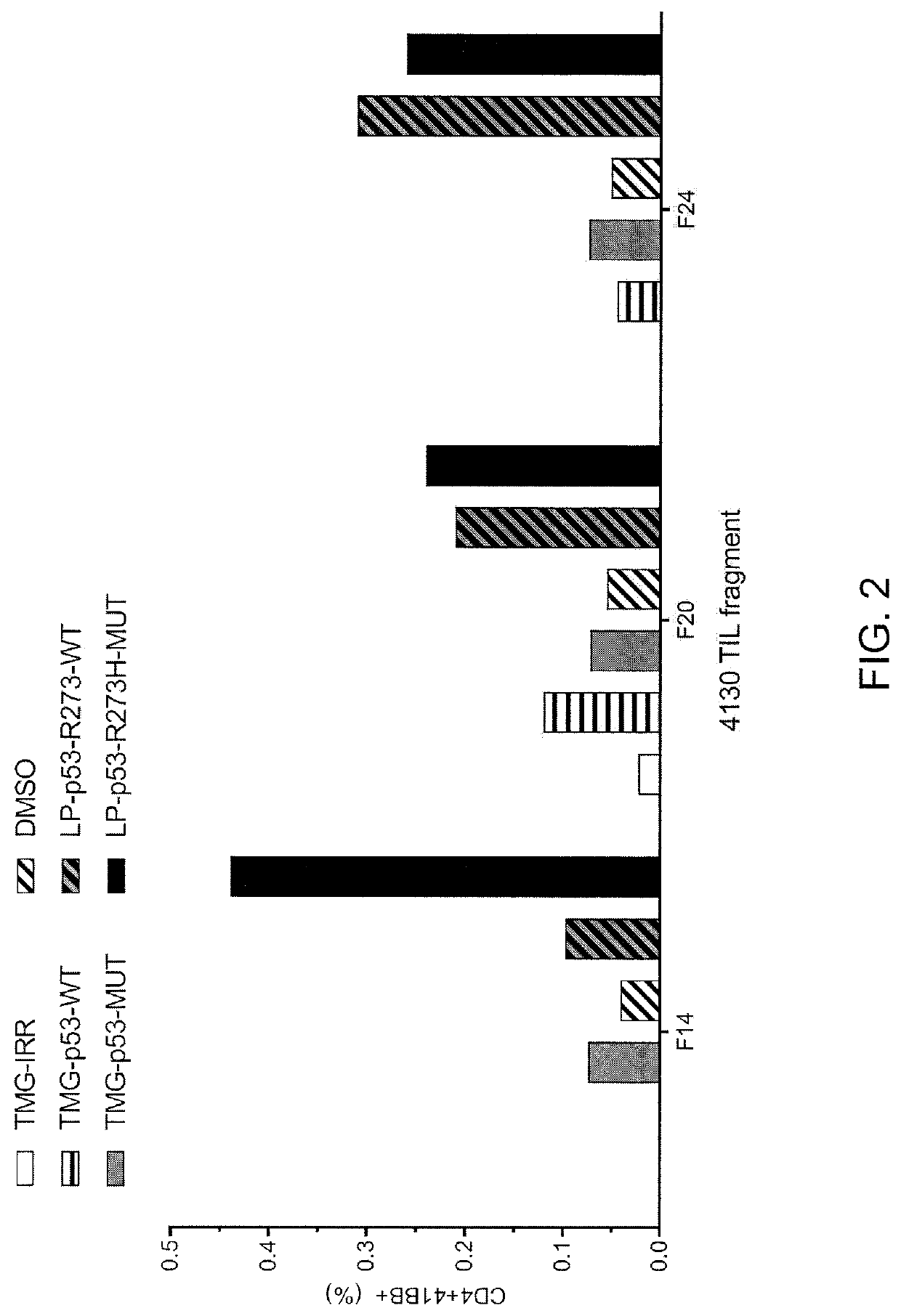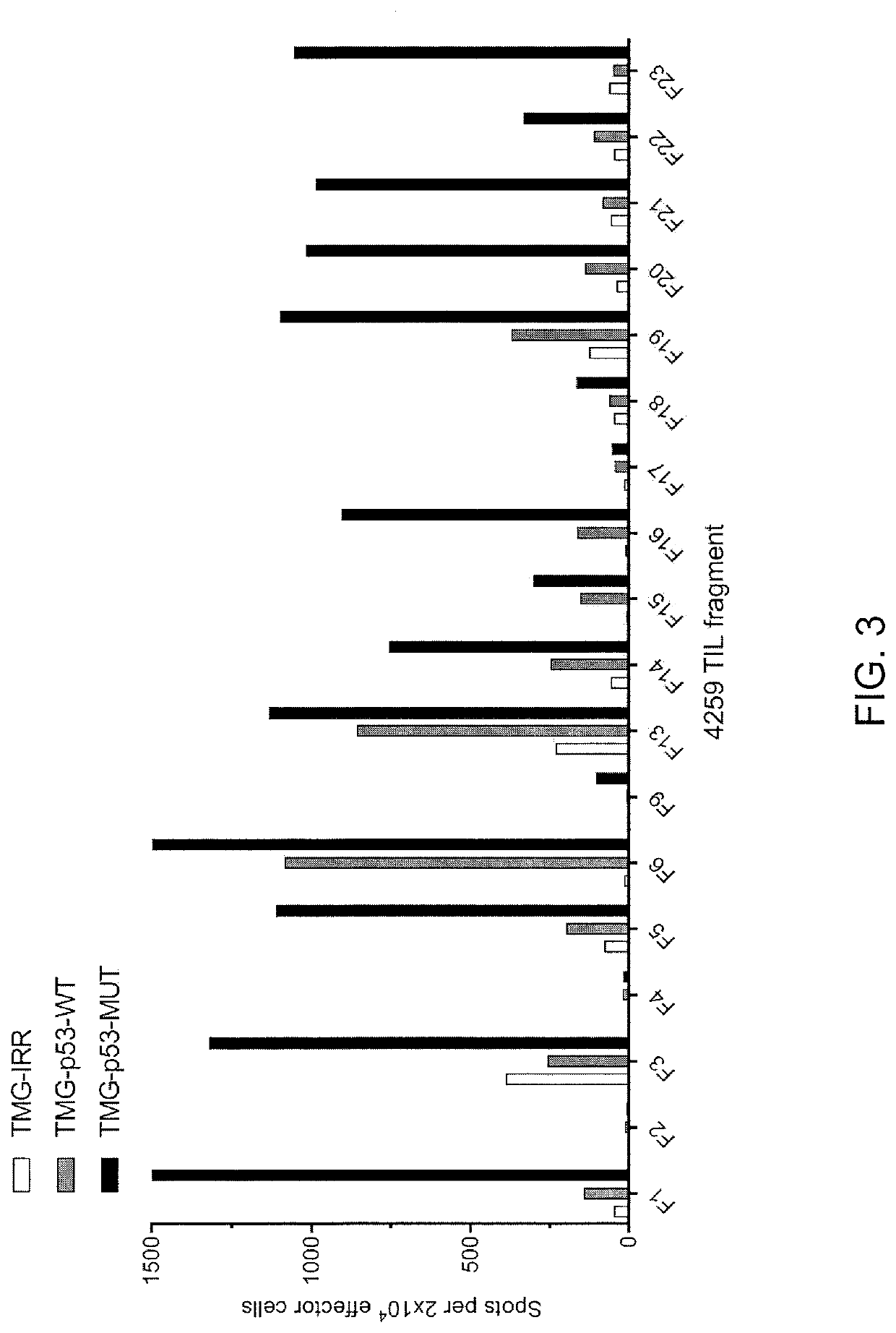Methods of isolating t cells having antigenic specificity for a p53 cancer-specific mutation
- Summary
- Abstract
- Description
- Claims
- Application Information
AI Technical Summary
Benefits of technology
Problems solved by technology
Method used
Image
Examples
example 1
[0123]This example demonstrates the identification of anti-mutated p53 T cells in Patient 4141 by co-culturing autologous APCs induced to express mutated p53 within autologous T cells (“p53 hotspot mutation universal screening”). This example also demonstrates the isolation and specific reactivity of a TCR from patient 4141.
[0124]Experiments were carried out as described for FIGS. 1 and 45-48 for Patient 4141. TIL fragment F12 and infusion bag TIL (Rx1) from patient 4141 and p53-R175H-specific TCR or mock transduced T cells from patient 4196 were used as effectors. Co-cultures with T cell effectors and HLA-A*02:01 APCs (autologous to patient 4141) were either (1) electroporated with TMGs composed of irrelevant, WT p53, or mutated p53 sequences or (2) pulsed with peptide vehicle (DMSO) or purified (>95% by HPLC) 25 amino acid peptides composed of WT p53-R175 sequence or mutated p53-R175H sequence. T cells only (no target) was negative control and PMA and Iono was positive control (la...
example 2
[0132]This example demonstrates the identification of anti-mutated p53 T cells in Patient 4130 by co-culturing autologous APCs induced to express mutated p53 within autologous T cells (“p53 hotspot mutation universal screening”).
[0133]Experiments were carried out as described for FIG. 2 for Patient 4130. TIL fragments (F14, F20 and F24) from patient 4130 were co-cultured with autologous APCs (1) electroporated with TMGs composed of irrelevant, WT p53 or mutated p53 sequences or (2) pulsed with peptide vehicle (DMSO) or purified (>95% by HPLC) 25 amino acid peptides composed of WT p53-R273 sequence or mutated p53-R273H sequence. Co-cultures were performed overnight at 37° C. Expression of 4-1BB was evaluated by flow cytometry after gating for lymphocytes→living cells (PI negative)→CD3+ (T cells). The results are shown in FIG. 2.
example 3
[0134]This example demonstrates the identification of anti-mutated p53 T cells in Patient 4259 by co-culturing autologous APCs induced to express mutated p53 within autologous T cells (“p53 hotspot mutation universal screening”). This example also demonstrates the isolation and specific reactivity of a TCR isolated from patient 4259.
[0135]Experiments were carried out as described for FIGS. 3-8 and 49-53 for Patient 4259. TIL fragments (n=18) from patient 4259 were co-cultured with autologous APCs electroporated with TMG composed of irrelevant, WT p53 or mutated p53 sequences. Co-cultures were performed overnight at 37° C. Secretion of IFN-γ was evaluated using ELISPOT assay. The results are shown in FIG. 3. Expression of 4-1BB was evaluated by flow cytometry after gating for lymphocytes→living cells (PI negative)→CD3+ (T cells). The results are shown in FIGS. 4-5.
[0136]TIL fragments (n=18) from patient 4259 were co-cultured with autologous APCs pulsed with peptide vehicle (DMSO) or ...
PUM
| Property | Measurement | Unit |
|---|---|---|
| Volume | aaaaa | aaaaa |
| Molar density | aaaaa | aaaaa |
| Fraction | aaaaa | aaaaa |
Abstract
Description
Claims
Application Information
 Login to View More
Login to View More - R&D
- Intellectual Property
- Life Sciences
- Materials
- Tech Scout
- Unparalleled Data Quality
- Higher Quality Content
- 60% Fewer Hallucinations
Browse by: Latest US Patents, China's latest patents, Technical Efficacy Thesaurus, Application Domain, Technology Topic, Popular Technical Reports.
© 2025 PatSnap. All rights reserved.Legal|Privacy policy|Modern Slavery Act Transparency Statement|Sitemap|About US| Contact US: help@patsnap.com



